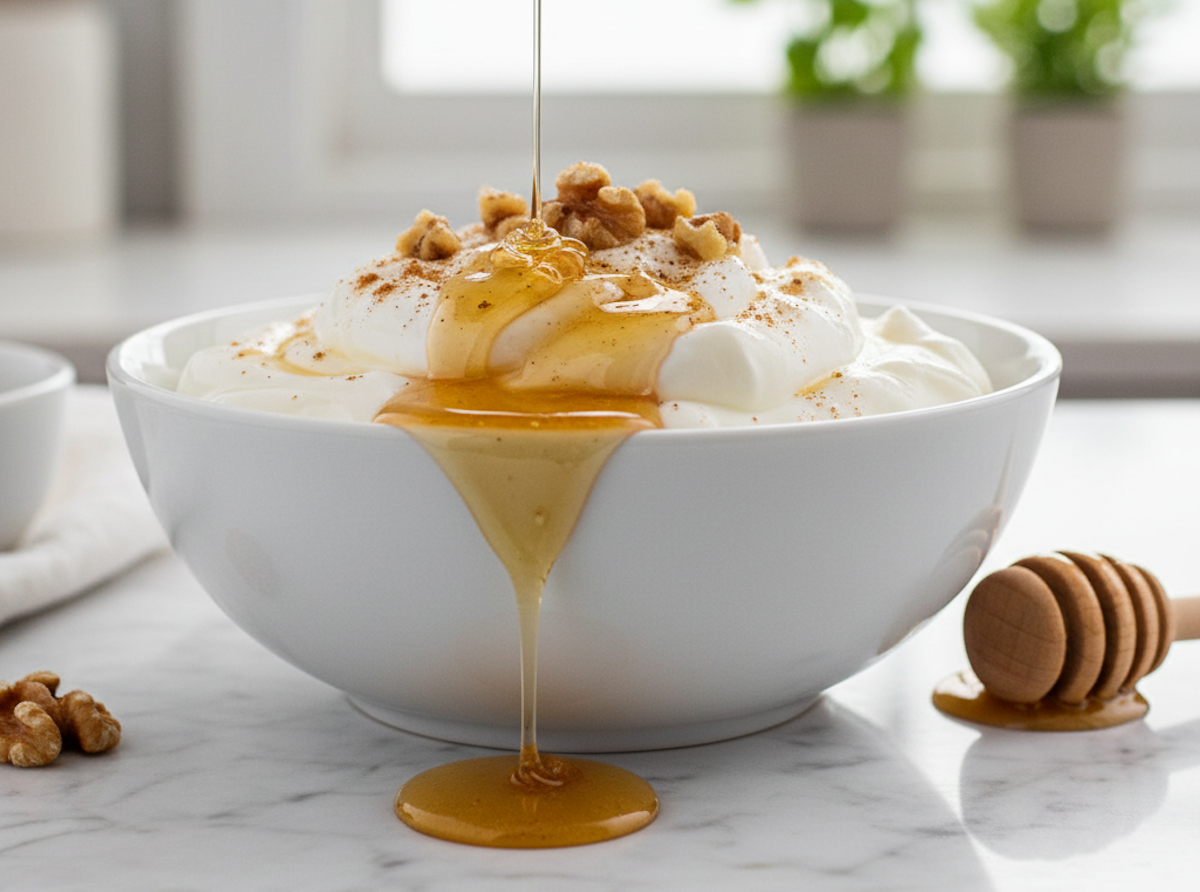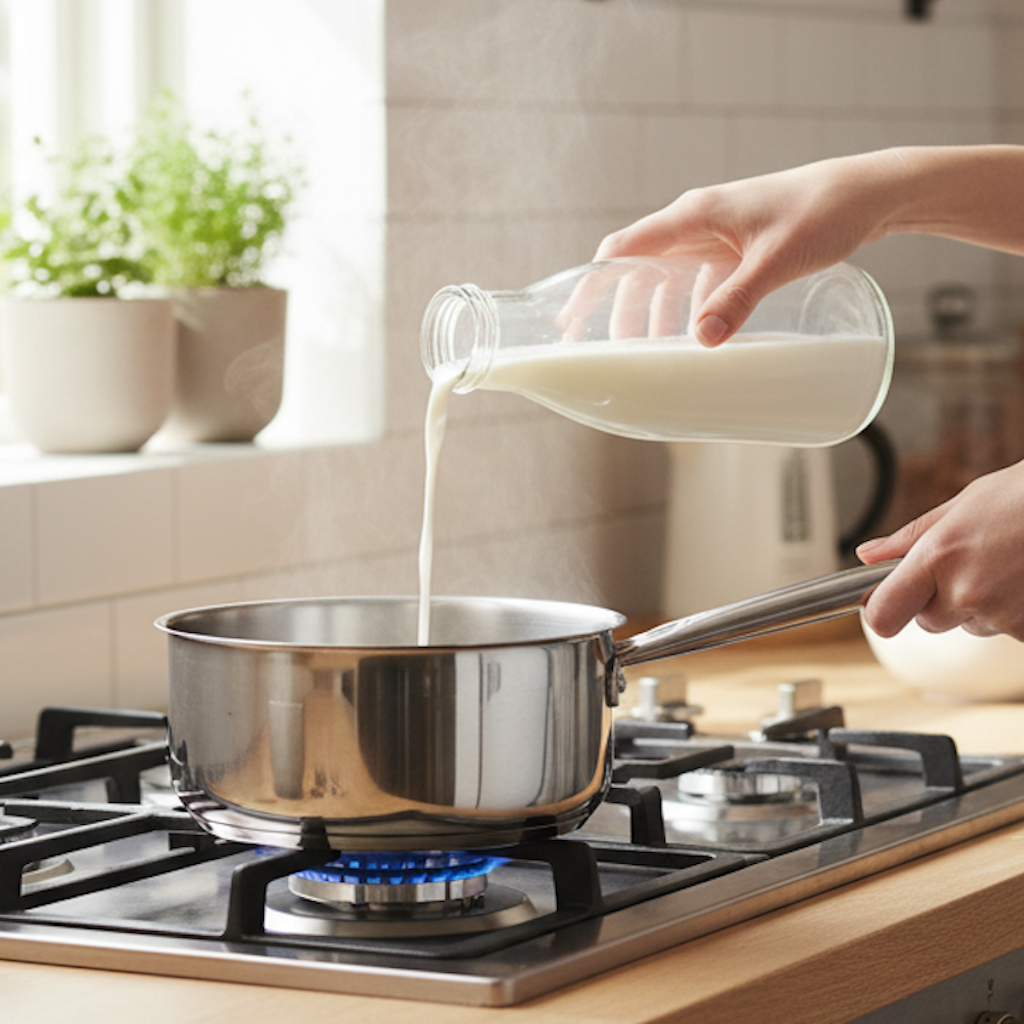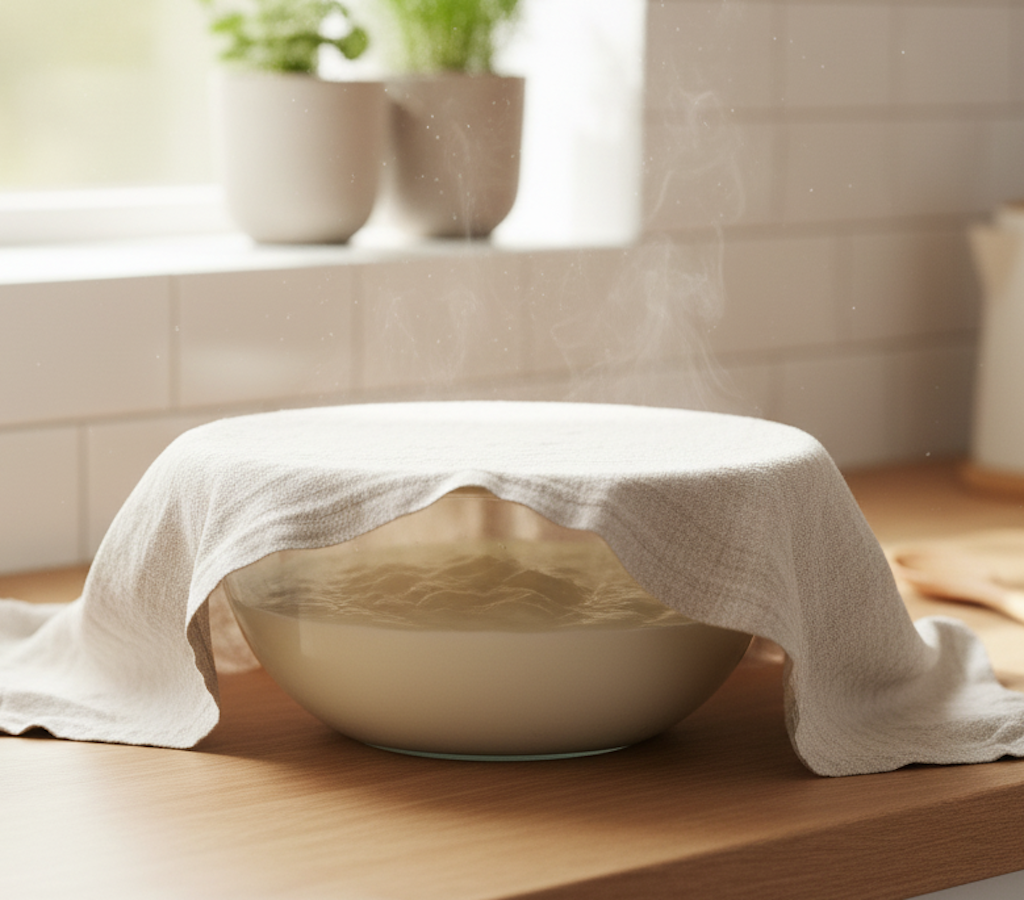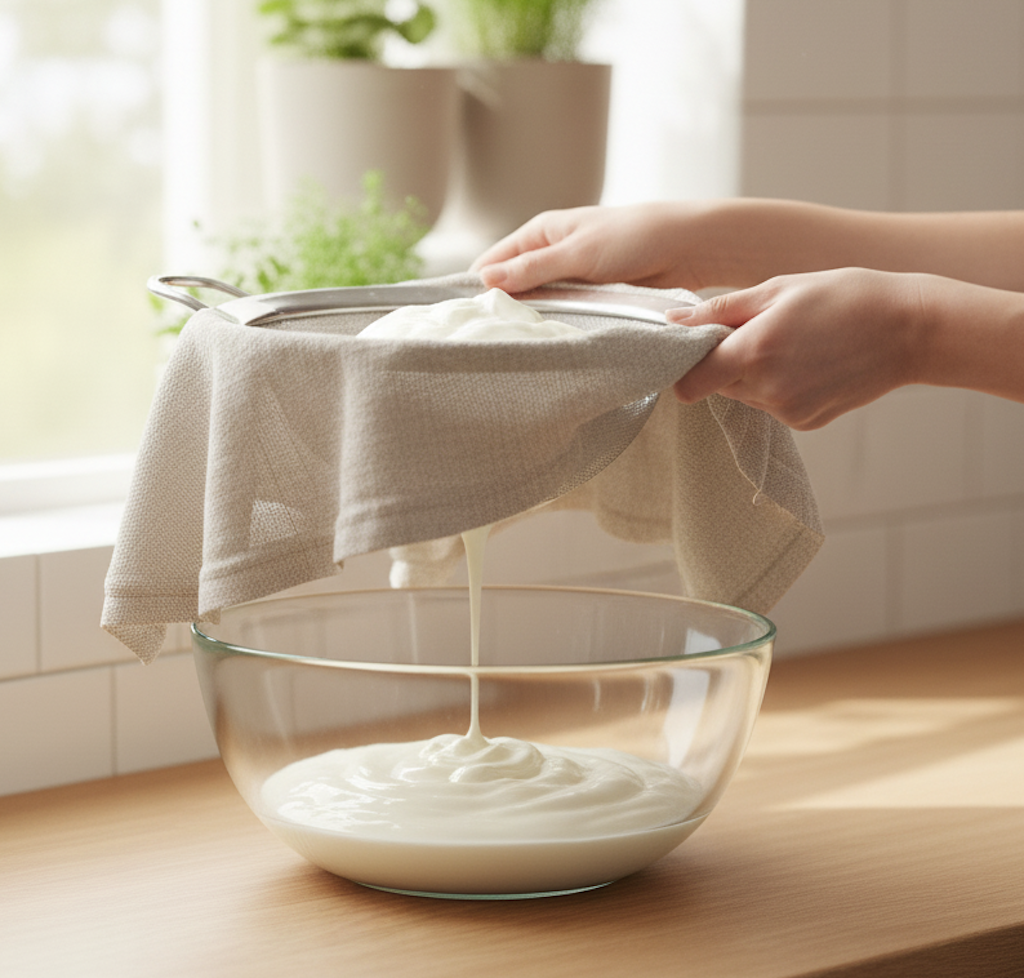If you’ve ever wondered how to make Greek yogurt at home, you’re in for a treat. This thick, creamy, and tangy delight is not only delicious but packed with protein. Greek yogurt has become a kitchen staple — perfect for breakfasts, snacks, and even baking. Unlike store-bought versions like Chobani Greek yogurt or Fage Greek yogurt, making it yourself gives you full control over the ingredients, texture, and flavor. Whether you’re aiming for a low-fat option or a rich, traditional version, homemade Greek yogurt delivers both taste and nutrition in every spoonful.
Why This Greek Yogurt Works
This Greek yogurt recipe works because it’s simple, natural, and customizable. You only need two ingredients — milk and starter yogurt — and a bit of patience. The process of straining removes excess whey, giving you that iconic creamy texture. It’s an ideal base for smoothies, parfaits, or even Greek yogurt bagels. The best part? It’s budget-friendly and free from preservatives. Once you try this homemade version, you’ll never want to go back to store-bought brands again.
⏱ Recipe Time Overview
- Prep Time: 10 minutes
- Cook Time: 15 minutes
- Fermenting Time: 6–10 hours
- Total Time: 6–10 hours 25 minutes
- Servings: 4 cups
Greek Yogurt Ingredients
- 4 cups whole milk (or 2% for lighter texture)
- 2 tablespoons plain yogurt with live cultures (as starter)
- Cheesecloth or clean kitchen towel for straining
- Thermometer (optional but helpful)
- Large bowl and strainer
Step-by-Step Instructions for Greek Yogurt
- 1. Heat the milk: Pour milk into a saucepan and warm over medium heat until it reaches about 180°F (82°C). Stir gently to avoid scorching.
- 2. Cool down: Remove from heat and let it cool to 110°F (43°C) — warm but not hot to the touch.
- 3. Add the starter: Whisk in the plain yogurt (your culture). You can use a tablespoon from Oikos Greek yogurt or Liberté Greek yogurt as a starter.
- 4. Incubate: Cover the mixture with a lid or plastic wrap and keep it warm (in an oven with the light on or a yogurt maker) for 6–10 hours. The longer it sits, the tangier the flavor.
- 5. Strain the yogurt: Line a strainer with cheesecloth, place it over a bowl, and pour the yogurt mixture in. Let it strain in the fridge for 2–4 hours, depending on how thick you want it.
- 6. Transfer and store: Scoop the creamy yogurt into jars or containers and refrigerate. It will stay fresh for about a week.
Pro Tips for Greek Yogurt
- Use full-fat milk for richer flavor and creamier texture.
- The starter must contain live active cultures — that’s what makes the magic happen.
- Don’t rush the fermentation; time builds flavor and thickness.
- You can save a few tablespoons from your batch to use as the next starter — homemade Greek yogurt protein for future recipes!
Serving Suggestions for Greek Yogurt
Greek yogurt is incredibly versatile. Enjoy it plain with honey and nuts, or use it as a base for dips, dressings, and desserts. Try layering it with fruit and granola for a breakfast parfait, or swirl it into smoothies for extra protein. It also makes a great substitute for sour cream or mayonnaise in recipes. Whether paired with fresh berries, spread on toast, or mixed into frozen Greek yogurt ice cream, every spoonful is rich and refreshing.
Delicious Variations
- Greek Yogurt Bagels: Mix your yogurt with self-rising flour to create easy, high-protein bagels.
- Lemon Custard Yogurt: Add lemon zest and honey for a light and zesty version — perfect as a dessert.
- Strawberry Greek Yogurt: Blend in fresh strawberries for a fruity twist that tastes like frozen custard ice cream.
- Pumpkin Greek Yogurt: Stir in pumpkin puree and cinnamon for a fall-inspired treat.
Nutrition Information (per serving)
| Calories | Protein | Carbs | Fat |
|---|---|---|---|
| 140 | 12g | 9g | 5g |
FAQ
1. What is Greek yogurt, and how is it different from regular yogurt?
Greek yogurt is strained to remove whey, resulting in a thicker, creamier texture with higher protein.
2. Can I use any yogurt as a starter?
Yes, as long as it contains live active cultures — brands like Chobani or Fage work perfectly.
3. How long does homemade Greek yogurt last?
It stays fresh for 7–10 days when stored in an airtight container in the fridge.
4. Can I make it lactose-free?
Yes, use lactose-free milk; the process remains the same.
Conclusion
Once you try this Greek yogurt recipe, you’ll never look back. It’s creamy, rich in protein, and easy to make at home with just milk and a starter. Perfect for breakfast, desserts, or healthy snacking — this versatile recipe brings the taste of tradition straight to your kitchen. Give it a try and share your creation!
═══ ✨ Get Recipe ✨ ═══
Creamy Homemade Greek Yogurt – Easy & Healthy Recipe
Ingredients
- 4 cups whole milk (or 2% for lighter texture)
- 2 tablespoons plain yogurt with live cultures (as starter)
- Cheesecloth or clean kitchen towel for straining
- Thermometer (optional but helpful)
- Large bowl and strainer
Instructions
- Heat the milk: Pour milk into a saucepan and warm over medium heat until it reaches about 180°F (82°C). Stir gently to avoid scorching.
- Cool down: Remove from heat and let it cool to 110°F (43°C) — warm but not hot to the touch.
- Add the starter: Whisk in the plain yogurt (your culture). You can use a tablespoon from Oikos Greek yogurt or Liberté Greek yogurt as a starter.
- Incubate: Cover the mixture with a lid or plastic wrap and keep it warm (in an oven with the light on or a yogurt maker) for 6–10 hours. The longer it sits, the tangier the flavor.
- Strain the yogurt: Line a strainer with cheesecloth, place it over a bowl, and pour the yogurt mixture in. Let it strain in the fridge for 2–4 hours, depending on how thick you want it.
- Transfer and store: Scoop the creamy yogurt into jars or containers and refrigerate. It will stay fresh for about a week.
Notes
- Use full-fat milk for richer flavor and creamier texture.
- The starter must contain live active cultures — that’s what makes the magic happen.
- Don’t rush the fermentation; time builds flavor and thickness.
- You can save a few tablespoons from your batch to use as the next starter — homemade Greek yogurt protein for future recipes!










